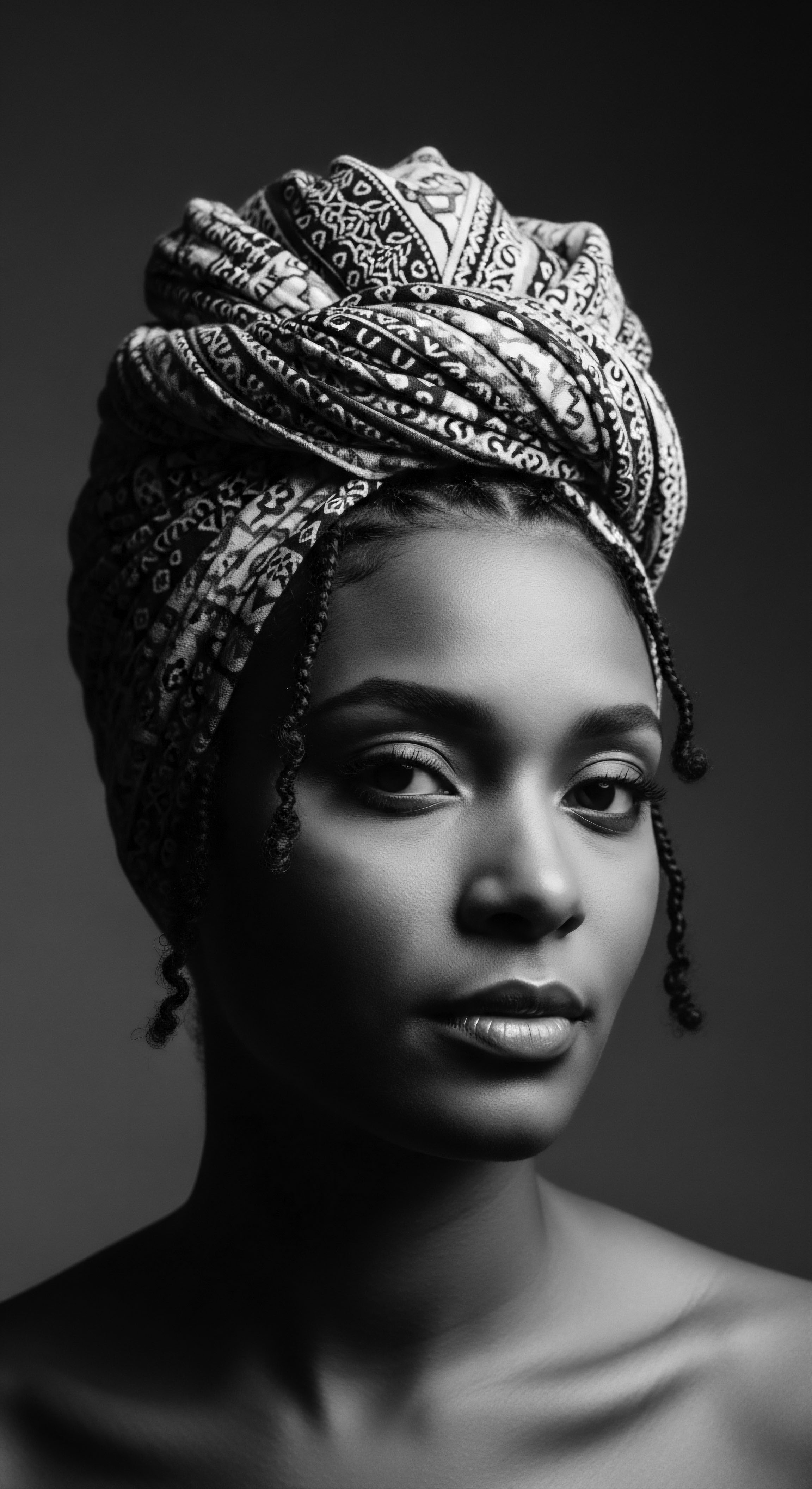
Fundamentals
The satin pillowcase, in its simplest manifestation, represents a fundamental shift in how we approach nocturnal hair care, particularly for strands that possess a natural inclination towards coily, kinky, or wavy textures. It offers a distinct advantage over traditional cotton pillowcases, whose coarse fibers, when viewed under magnification, reveal a landscape of microscopic hooks and loops. These minute structures, though imperceptible to the naked eye, interact with the delicate outer layer of hair, the cuticle, in ways that can be detrimental.
As one rests and shifts during sleep, cotton’s inherent friction snags and tugs at individual hair strands, leading to a phenomenon known as mechanical stress. This consistent abrasion over hours causes the cuticle scales to lift and abrade, diminishing the hair’s natural sheen and making it more vulnerable to breakage.
Consider the surface of a satin pillowcase; its smooth, tightly woven fibers present a dramatically different tactile experience. This glide, rather than grip, is the primary reason for its increasing prominence in hair wellness routines. The reduced friction means that hair moves freely across the surface, minimizing the pulling and tugging that leads to mechanical damage. For textured hair, which inherently possesses a more intricate and often more delicate cuticle structure due to its helical pattern, this distinction is particularly crucial.
The natural curves and bends of coily and kinky hair types create more points of contact and thus more opportunities for friction with rougher fabrics. A satin pillowcase acts as a protective shield, allowing these fragile strands to retain their structural integrity through the night.
The very definition of a satin pillowcase, then, extends beyond its material composition to encompass its protective function. It functions as a guardian for hair, especially textured hair, mitigating the environmental stressors encountered during sleep. This fundamental understanding underpins its recognition as a valuable tool for maintaining hair health and vibrancy, a modern echo of ancient protective practices. It provides a foundational layer of defense, a silent sentinel against the abrasions of the night, contributing to the overall wellbeing of the hair.
The satin pillowcase serves as a fundamental protective barrier, reducing friction on hair, especially for textured strands, and preserving their natural integrity during sleep.

Understanding the Glide ❉ A Hair-Friendly Surface
The tactile smoothness of satin is not merely a matter of comfort; it represents a deliberate choice in fabric engineering that respects the delicate nature of hair. Unlike cotton, which absorbs moisture from the hair, leading to dryness and further vulnerability, satin’s non-absorbent properties help to preserve the hair’s natural oils and applied moisturizers. This is a subtle yet significant advantage, particularly for hair types prone to dryness, a common characteristic of many textured hair forms. Maintaining the hair’s natural moisture balance is a cornerstone of healthy hair practices, and the satin pillowcase contributes to this goal by allowing products to remain where they belong ❉ on the hair itself.
- Reduced Breakage ❉ The diminished friction directly translates into fewer broken strands and less split ends, preserving hair length.
- Moisture Retention ❉ Hair remains hydrated throughout the night, aiding in softness and elasticity upon waking.
- Minimized Frizz ❉ Smooth hair cuticles, undisturbed by friction, contribute to a noticeably smoother appearance with less frizz.
- Preserved Styles ❉ Protective styles, braids, and curls maintain their definition and integrity for longer periods, reducing the need for daily manipulation.
Therefore, the satin pillowcase becomes a simple yet potent instrument in the daily ritual of hair care, providing a continuous, passive benefit throughout the resting hours. Its contribution to preventing damage and preserving moisture positions it as a cornerstone in a thoughtful approach to hair health, reflecting a deeper understanding of how environmental factors interact with hair structure. This easy integration into a nightly routine underscores its profound utility for individuals seeking to honor and protect their hair.
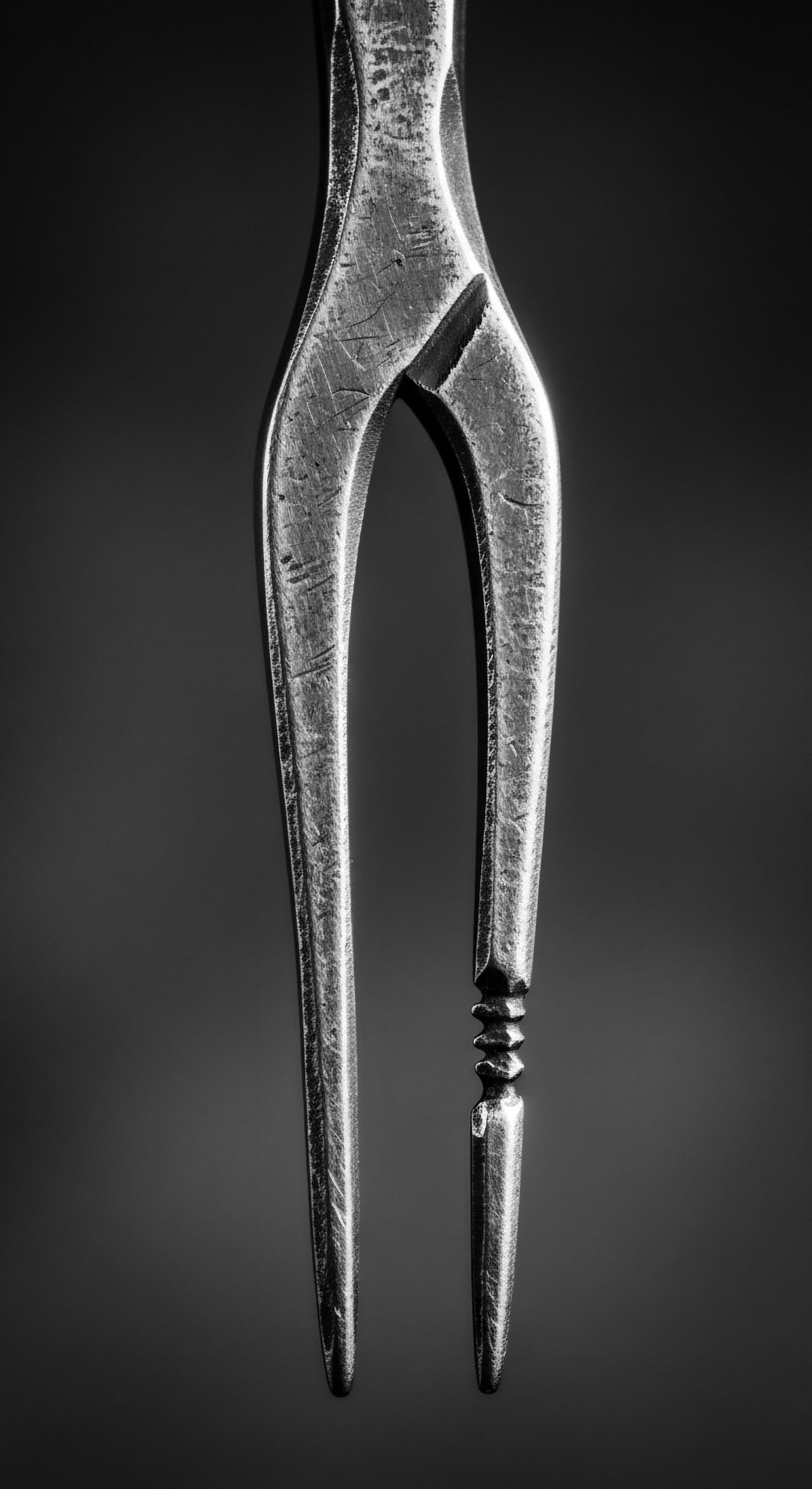
Intermediate
The satin pillowcase, beyond its foundational function, assumes an intermediate meaning when viewed through the lens of ongoing hair maintenance and the nuanced needs of textured hair. Its significance transcends simple friction reduction, evolving into a strategic tool for preserving hair’s internal moisture equilibrium and extending the longevity of carefully crafted styles. For individuals with coily, kinky, or wavy hair, the preservation of moisture stands as a paramount concern.
These hair types, due to their structural configuration, often experience a greater challenge in retaining natural sebum along the hair shaft compared to straight hair. The spiral paths prevent natural oils from easily descending the strand, rendering them more susceptible to desiccation.
Cotton, a hydrophilic fiber, readily wicks moisture away from hair and skin, accelerating this drying process. Imagine a thirsty sponge; cotton acts similarly towards hair’s precious hydration. Satin, however, possesses hydrophobic qualities, meaning it repels water.
This property ensures that the hair’s inherent moisture, along with any serums, oils, or leave-in conditioners applied as part of a nightly regimen, remains largely undisturbed. The subtle yet persistent reinforcement of a hydrated environment through the use of a satin pillowcase minimizes the daily moisture loss that can lead to brittleness, breakage, and a compromised cuticle layer.
Beyond basic protection, a satin pillowcase strategically aids moisture retention and extends style longevity for textured hair, reflecting a deeper understanding of hair’s needs.
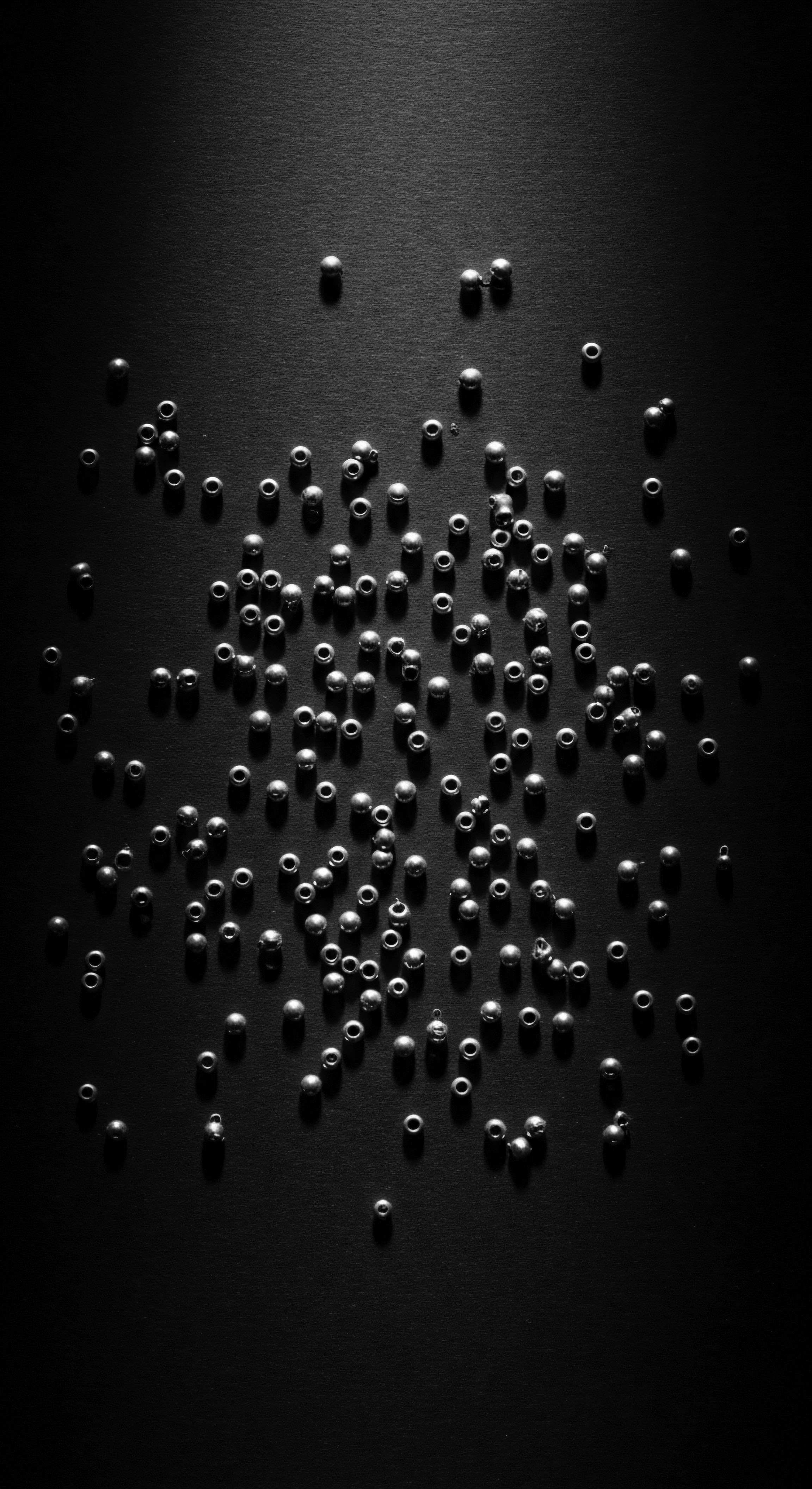
Historical Resonance and Modern Utility
The contemporary embrace of the satin pillowcase echoes ancestral practices that prioritized the protection and preservation of hair. Across various African and diasporic cultures, hair was revered, often seen as a conduit for spiritual connection, a marker of identity, and a repository of history. Protective styling, hair oiling, and the use of head coverings were not merely aesthetic choices; they were crucial for maintaining hair health in challenging environments and ensuring its longevity.
The satin pillowcase, in this context, becomes a modern iteration of this ancestral wisdom, a simple yet effective adaptation to contemporary living. It carries the weight of a tradition centered on conscious hair care, a continuous thread connecting past ingenuity with present-day solutions.
The application of a satin pillowcase extends to safeguarding intricate protective styles. Braids, twists, and locs, which can take hours to install and represent significant investments of time and care, benefit immensely from the reduced friction. Cotton can pull apart the neatness of these styles, causing frizz and unraveling.
Satin’s smooth surface allows these styles to glide, maintaining their definition and extending their wear, thereby supporting hair growth and reducing the need for frequent re-styling that can lead to further manipulation and stress. This connection to ancestral care methods, which often involved meticulous attention to detail and preservation, elevates the satin pillowcase beyond a mere accessory to a tool that honors and extends cherished practices.
| Historical Practices (Ancestral Wisdom) Headwraps & Fabric Bonnets ❉ Used fine cloths (e.g. woven cotton, sometimes silk in wealthier contexts) to cover hair, protecting from dust, sun, and abrasive bedding. |
| Contemporary Adaptation (Satin Pillowcase) Reduced Friction ❉ Provides a consistently smooth surface for hair to rest upon, preventing mechanical damage from rough textures. |
| Historical Practices (Ancestral Wisdom) Oiling & Conditioning ❉ Application of natural oils (e.g. shea butter, coconut oil) to nourish and seal moisture into hair. |
| Contemporary Adaptation (Satin Pillowcase) Moisture Preservation ❉ Non-absorbent material helps hair retain its natural oils and applied emollients, fighting dryness. |
| Historical Practices (Ancestral Wisdom) Protective Styling ❉ Braids, twists, and elaborate coiffures designed to minimize manipulation and exposure, promoting growth. |
| Contemporary Adaptation (Satin Pillowcase) Style Longevity ❉ Helps maintain the neatness and definition of protective styles, extending their wear and reducing re-styling frequency. |
| Historical Practices (Ancestral Wisdom) Nightly Rituals ❉ Deliberate attention to hair care before sleep, often involving tying or covering, as part of a holistic wellness approach. |
| Contemporary Adaptation (Satin Pillowcase) Passive Protection ❉ Offers continuous hair benefits through the entire sleep cycle, minimizing daily wear and tear. |
| Historical Practices (Ancestral Wisdom) The satin pillowcase carries forward a legacy of mindful hair protection, translating ancient principles into a modern convenience. |

The Economic and Social Dimensions
The sustained use of a satin pillowcase contributes to both the economic and social well-being of individuals with textured hair. By preserving styles for longer periods, it potentially reduces the frequency and cost associated with salon visits for re-styling or extensive product use to revitalize damaged hair. This economic benefit, though seemingly small on a daily basis, accumulates over time, representing a practical investment in hair health.
Socially, the ability to maintain neat, vibrant hair with less effort can positively impact self-perception and confidence. In communities where hair has historically been a significant marker of identity, resilience, and personal expression, tools that support its health hold a particular resonance.
The intermediate significance of the satin pillowcase, therefore, lies in its capacity to serve as a bridge ❉ connecting essential hair science with historical practices, and empowering individuals through practical daily care. It becomes a testament to the continuous search for effective ways to honor and maintain the inherent beauty of textured hair, recognizing its unique requirements and celebrating its diverse forms. This simple item plays a role in the broader narrative of self-care and cultural affirmation within hair traditions.
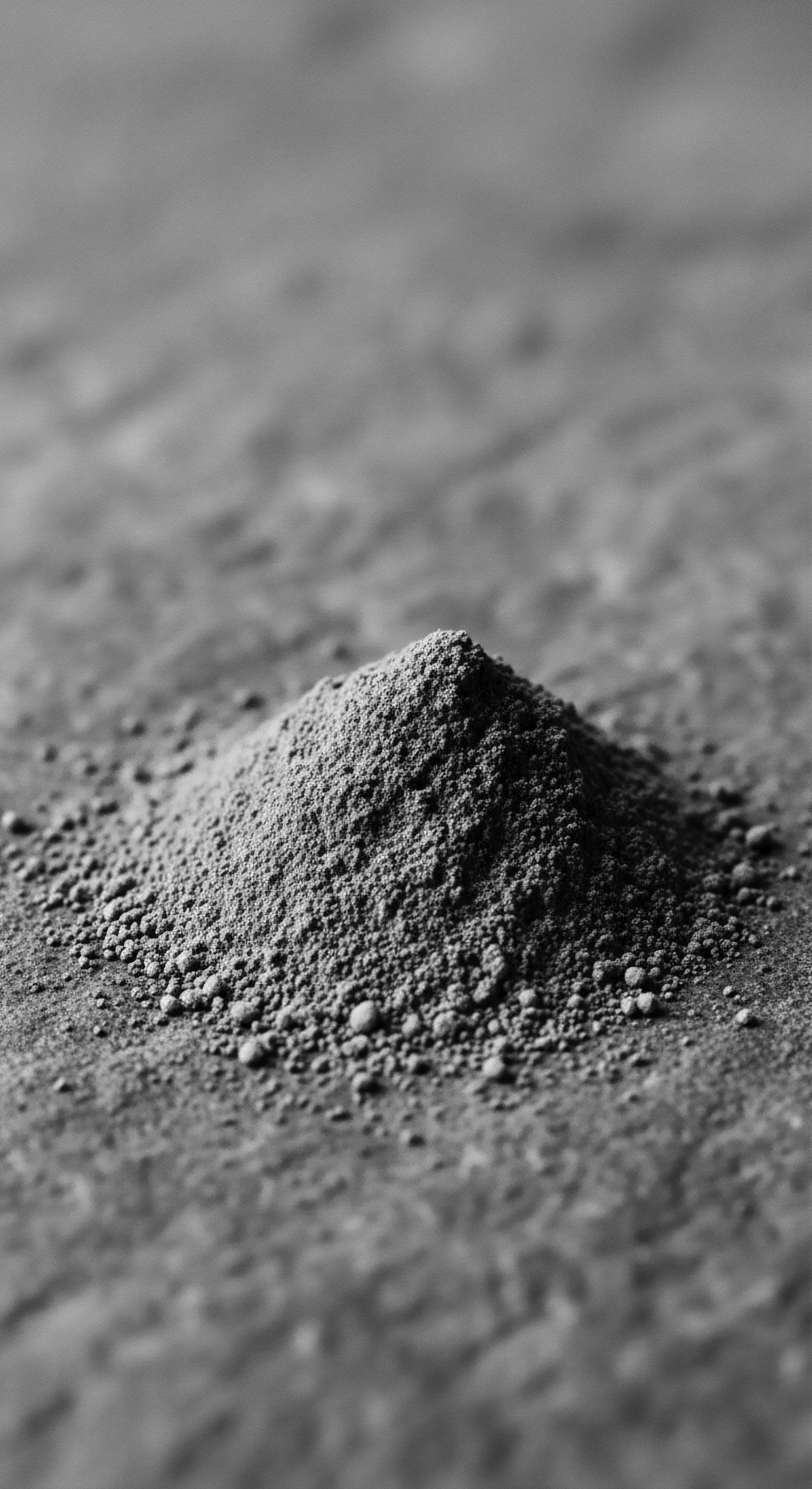
Academic
The academic understanding of the satin pillowcase transcends its superficial utility, positioning it as a significant artifact within the broader discourse of textile science, hair trichology, and the socio-cultural history of hair care, particularly concerning textured hair. Its meaning is elucidated through an interdisciplinary lens, revealing its efficacy not as a novel invention, but as a modern reification of ancestral wisdom concerning hair preservation. From a scientific perspective, the fundamental advantage of satin (typically woven polyester or silk, characterized by a specific weave creating a lustrous, smooth surface) lies in its low coefficient of friction and minimal hygroscopicity when contrasted with cellulosic fibers like cotton.
Research in textile science and cosmetology consistently points to the detrimental effects of mechanical friction on hair integrity. Microscopic examination of hair shafts exposed to daily pillowcase friction reveals lifted cuticles, cortical fraying, and eventual fracture, especially pronounced in hair with a higher curl index due to its non-uniform cross-section and numerous points of curvature. The smooth, non-abrasive surface of satin significantly reduces these micro-traumas.
Furthermore, its inherent hydrophobic properties prevent the undesirable absorption of moisture from the hair, a critical factor for textured hair, which is predisposed to dryness. This non-occlusive yet moisture-preserving environment maintains the hair’s natural lipid barrier and hydration levels, supporting cuticle health and elasticity.
Academically, the satin pillowcase signifies a modern validation of ancestral hair care principles, offering scientific benefits through reduced friction and enhanced moisture retention for textured hair.
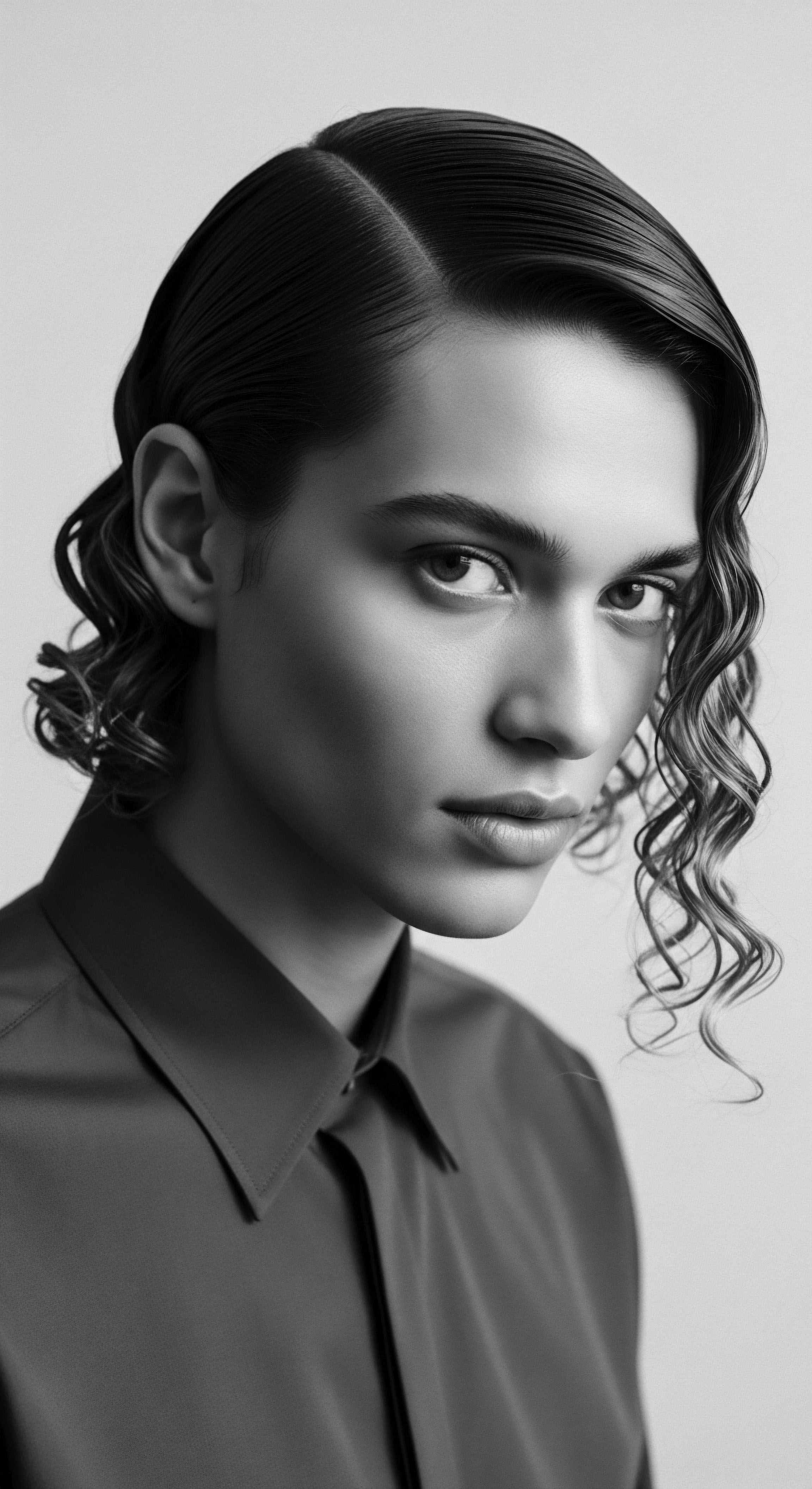
Echoes from the Source ❉ Ancestral Practices and Hair Resilience
The profound meaning of the satin pillowcase is deeply rooted in the historical and ancestral practices of hair care within Black and mixed-race communities. For centuries, across various African cultures and subsequently within the diaspora, hair was not merely an aesthetic feature; it functioned as a profound cultural identifier, a spiritual conduit, and a symbol of status, tribe, and life stage. The meticulous attention paid to hair preservation, often involving elaborate protective styles, oiling rituals, and the use of head coverings, reflects an inherent understanding of its delicate nature and vital significance.
The challenge of maintaining hair health was particularly acute for enslaved African women in the Americas, who faced grueling labor conditions, inadequate resources, and the trauma of cultural displacement. Despite these immense adversities, they maintained sophisticated hair practices born of necessity and ingenuity.
Ayana Byrd and Lori Tharps, in their seminal work Hair Story ❉ Untangling the Roots of Black Hair in America (2001), document the extraordinary resilience and creativity of Black women in preserving their hair despite the brutality of slavery. While specific “satin pillowcases” as we know them were not universally available, the practice of covering hair at night with softer fabrics, or ensuring hair was carefully contained within protective styles to minimize friction against coarse sleeping surfaces (often straw mattresses or rough cotton/linen bedding), was a widespread and essential survival mechanism. This ancestral knowledge, passed down through generations, implicitly understood the critical need to shield hair from environmental and mechanical stressors.
The smooth inner linings of headwraps, or the careful arrangement of hair within protective styles, served a similar purpose to the modern satin pillowcase ❉ to reduce abrasion and retain moisture. This historical ingenuity, born of extreme circumstances, underscores the enduring necessity for specialized hair care practices within these communities.
The satin pillowcase, therefore, is not a product isolated from this rich historical context. Instead, it represents a contemporary manifestation of a continuous, ancestral imperative ❉ to protect and honor textured hair. It embodies a legacy of adaptive hair science, where traditional methods of preservation, often involving wrapping and containment, find their modern, technologically refined analogue.
This historical continuum provides a compelling academic framework for understanding the product’s enduring relevance and its deeper cultural resonance. It is a tangible link to a heritage of self-care and resistance, where the preservation of hair became synonymous with the preservation of self and identity.

The Unbound Helix ❉ Identity, Wellness, and the Future
The academic investigation into the satin pillowcase further extends into its psychosocial dimensions. For individuals with textured hair, the condition of their hair is often intertwined with personal identity, self-esteem, and social perception. Hair breakage, dryness, and the constant battle against frizz can contribute to feelings of frustration and dissatisfaction. The satin pillowcase, by offering a passive yet effective solution to these common challenges, contributes to a sense of agency and empowerment over one’s hair journey.
It reduces the daily effort required to maintain hair health, allowing for greater freedom in styling choices and less anxiety about morning hair rituals. This psychological benefit, though difficult to quantify, holds significant weight in the holistic wellness of individuals within Black and mixed-race communities, where hair has often been a site of both oppression and profound liberation.
The material choice for sleep surfaces becomes a microcosm of larger cultural narratives concerning hair care. The widespread adoption of satin pillowcases among textured hair communities reflects a collective prioritization of hair health that aligns with the principles of the natural hair movement. This movement, rooted in a historical context of reclaiming Black aesthetic standards, actively encourages practices that preserve and celebrate the inherent beauty of natural hair textures.
The satin pillowcase fits seamlessly into this ethos, serving as a readily accessible tool that supports the vitality and resilience of coily, kinky, and wavy hair, thereby contributing to broader movements of self-acceptance and cultural affirmation. Its simple design belies a complex interplay of scientific principles, historical necessity, and ongoing cultural reclamation.
- Biophysical Protection ❉ The satin’s low friction coefficient minimizes mechanical stress on the hair cuticle, reducing abrasion and micro-fractures, particularly beneficial for the delicate, often elliptical, cross-section of textured hair strands.
- Hydrophobic Efficacy ❉ Unlike absorbent cotton, satin’s non-hygroscopic nature prevents moisture stripping, maintaining the hair’s natural hydration and product efficacy, which is critical for retaining elasticity and preventing dryness-induced breakage.
- Sociological Impact ❉ The adoption of satin pillowcases symbolizes a cultural shift towards prioritizing hair health and protection within textured hair communities, aligning with movements that celebrate natural hair and ancestral care practices.
- Psychological Wellbeing ❉ By mitigating common hair concerns like frizz and breakage, the satin pillowcase contributes to improved hair manageability and appearance, fostering enhanced self-esteem and reduced hair-related stress.
Therefore, the academic delineation of the satin pillowcase embraces its role as a scientifically validated instrument of hair preservation, a direct descendant of ancestral protective rituals, and a contemporary symbol of cultural identity and self-care within textured hair experiences. Its meaning extends beyond mere material to represent a convergence of biological understanding, historical legacy, and evolving wellness paradigms. The careful consideration of its properties allows for a deeper appreciation of its multifaceted impact on the well-being of hair and the individuals who cherish it.
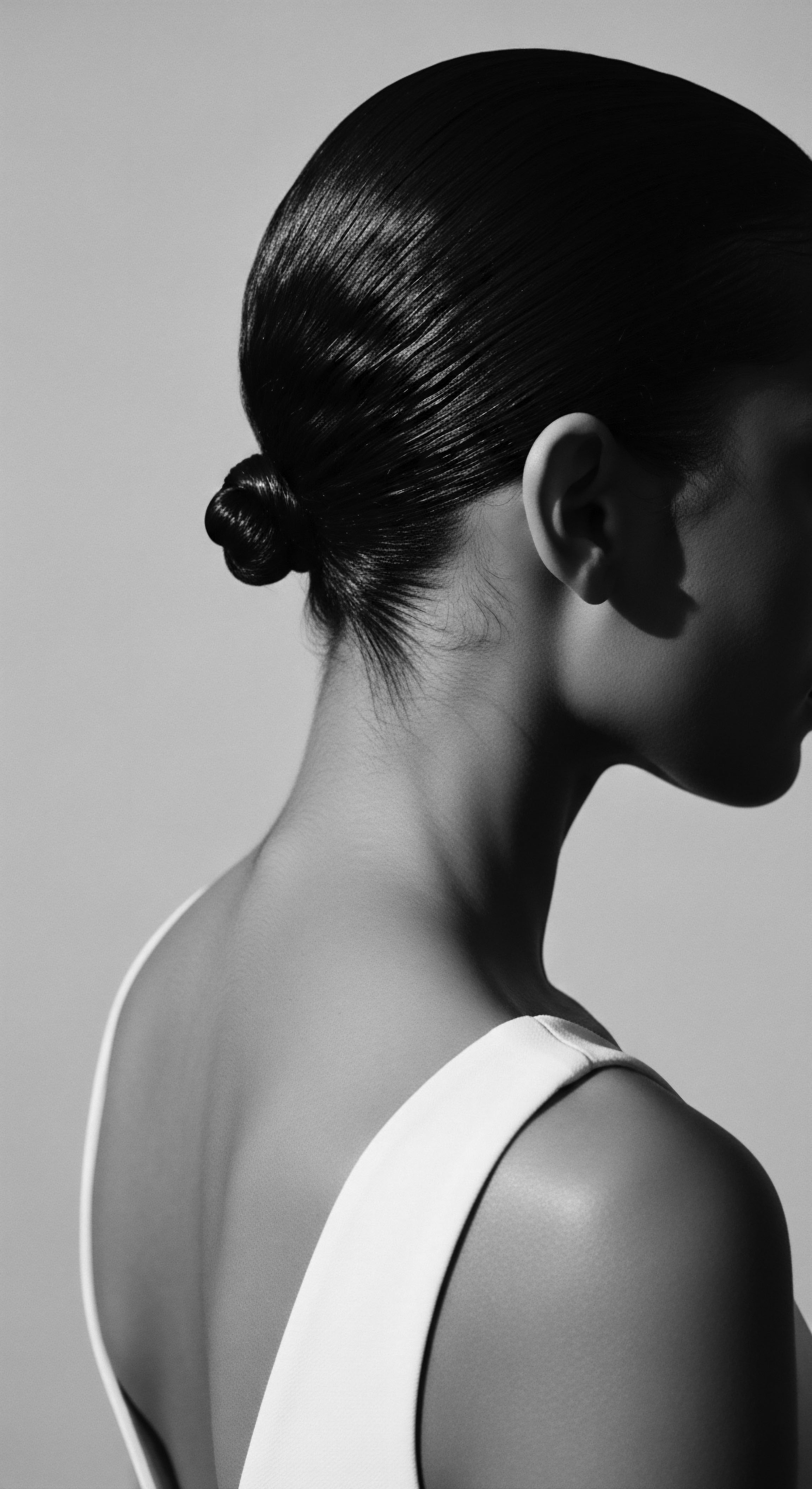
Reflection on the Heritage of Satin Pillowcase
To contemplate the satin pillowcase is to consider a silent guardian, a soft whisper across centuries of hair traditions. Its quiet presence in our nightly routines speaks volumes about an enduring human quest for care, particularly for hair that tells a story of lineage and resilience. From the earliest instances of ancestral communities shielding their strands with thoughtfully chosen fabrics, to the contemporary understanding of molecular hair structure, a continuous thread of wisdom connects these moments. The satin pillowcase, in its modern form, stands as a tender reminder of ingenuity, a simple yet potent tool that bridges the wisdom of the past with the insights of the present.
This unassuming textile holds a profound cultural resonance, especially for Black and mixed-race individuals whose hair has navigated complex histories of adornment, resistance, and self-expression. It is a symbol of self-preservation, a daily affirmation of the value placed on each coil, kink, and wave. The choice to rest one’s crown upon satin is an act of quiet reverence, a continuation of practices passed down through generations, often out of necessity, now embraced as a conscious choice for well-being. It reflects an unbroken chain of care, a legacy of nurturing the very fiber of identity.
The satin pillowcase, then, is more than just a fabric; it is a repository of stories, a tactile link to ancestral methods, and a gentle promise for the future of hair health. It embodies the “Soul of a Strand” ethos, acknowledging that every hair journey is deeply intertwined with heritage, sustained by knowledge, and honored through deliberate acts of care. Its smooth surface mirrors the desire for a smoother path for textured hair, a path cleared of unnecessary friction, allowing its inherent beauty to truly unfurl. This simple innovation offers a nightly benediction, a silent pledge to protect the legacy that lives within each strand.
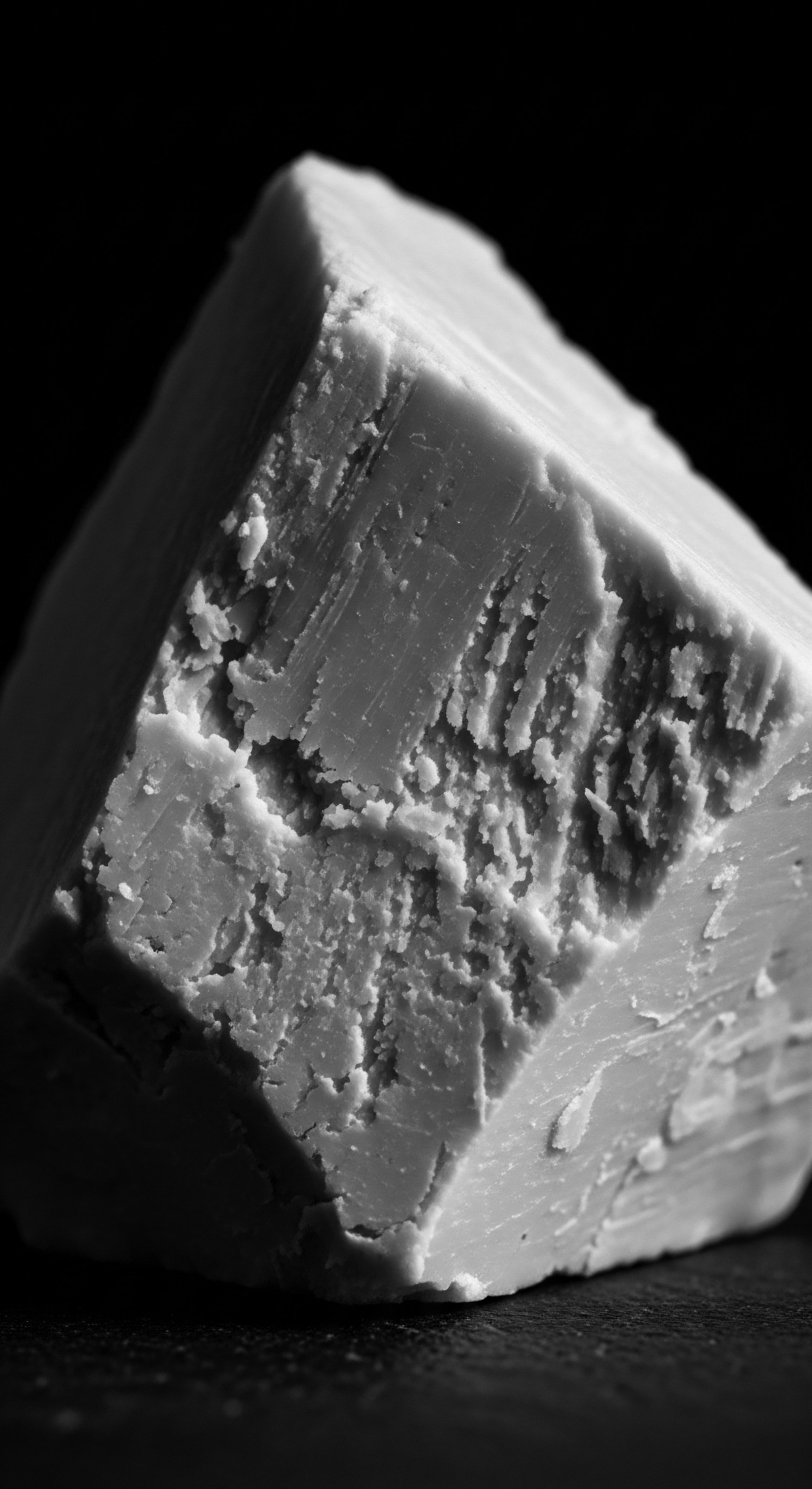
References
- Byrd, A. & Tharps, L. (2001). Hair Story ❉ Untangling the Roots of Black Hair in America. St. Martin’s Press.
- Robbins, C. R. (2012). Chemical and Physical Behavior of Human Hair (5th ed.). Springer.
- Goodwin, G. M. (2009). African Textiles ❉ Colour and Creativity Across a Continent. British Museum Press.
- Sherard, R. (2003). The Cultural Politics of Hair ❉ Historical and Contemporary Perspectives. Rutgers University Press.
- Thompson, E. C. (2007). African Americans and the Consumer Culture. Routledge.
- Banks, I. (2000). Hair Matters ❉ Beauty, Power, and the Politics of Hair in African American Culture. New York University Press.
- Dale, J. (2018). The Psychology of Fashion. Bloomsbury Publishing.
